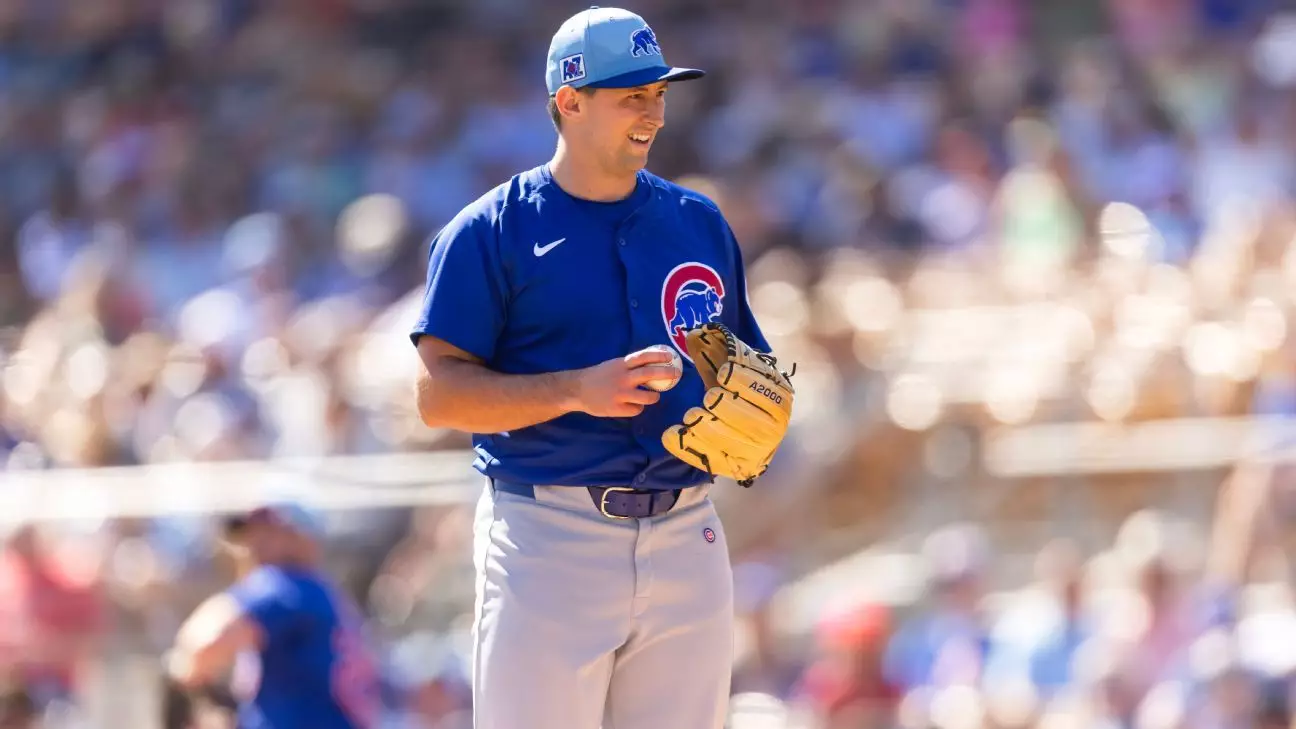In a groundbreaking moment for Major League Baseball (MLB), Chicago Cubs pitcher Cody Poteet made headlines as the first player to utilize a challenge on a ball/strike call during a major league game. This unprecedented event unfolded during the Cubs’ opening spring matchup against the Los Angeles Dodgers. Poteet, who joined the Cubs roster after a trade with the New York Yankees, demonstrated how the new review system works when he challenged an umpire’s decision on a fastball thrown to Dodgers infielder Max Muncy.
Poteet believed the pitch had caught the strike zone, but umpire Tony Randazzo deemed it a ball. Under this spring’s experimental rules, Poteet cleverly signaled for a review by tapping his head, marking a significant evolution in game strategy and player involvement. The technology then displayed the pitch’s location on the scoreboard, confirming Poteet’s intuition as the call was reversed, ultimately sending Muncy into an unfortunate 0-2 count before he struck out.
This innovative method of challenging calls is new to the major leagues, having been tested successfully in the minor leagues for several years. Rather than fully relying on automated systems for pitch calls, MLB introduced a more human-centered approach. Teams are permitted two challenges per game, and a successful challenge allows teams to keep their available attempts. This responsibility lies exclusively with the pitcher, catcher, or batter, who must make the challenge without assistance from their teammates in the dugout.
Should a player wish to initiate a review, they must perform the head-tap gesture – a subtle yet effective signal that could become commonplace in future games. Poteet, having spent time in the minors, expressed confidence in his understanding of the system. He articulated the importance of getting calls right, emphasizing the pressure players feel when making these crucial decisions. “I thought it caught a good part of the plate,” he mentioned, reiterating how critical accuracy is when outcomes can shift games.
While reactions from players such as Muncy indicate mixed feelings about how this challenge system will fare in high-stakes major league scenarios, its potential cannot be overlooked. Muncy acknowledged the significance of challenges but also highlighted the necessity for players to be fully certain of their calls before proceeding. He reflected on whether this technology could realistically find a place in the regular season but noted that the league has currently set no plans to implement it past spring training, with potential discussions for a roll-out by 2026.
As baseball continues to evolve, the implementation of review systems may change how the game is played fundamentally. This spring training, five stadiums in Arizona and eight in Florida will pilot the new challenge technology, with a large percentage of both the Cactus and Grapefruit League games incorporating it. The engagement of players’ opinions post-spring training will play an essential role in shaping the direction of the system, as MLB seeks to ensure that every strike and ball are called with accuracy and fairness.
As Poteet pointed out, every pitch is significant within the context of a game. The split observed during earlier minor league trials—where half of the challenged calls were overturned—will likely guide expectations in the majors. While Poteet had immediate success with his challenge, Cubs catcher Pablo Aliendo’s attempt later in the game was upheld, demonstrating the mixed bag nature of the challenge system. With only two challenges throughout the entire game against the Dodgers, it reflects a more modest implementation than the four challenges typically seen in minor league contests.
The Cubs’ victorious 12-4 performance against the Dodgers, combined with the new challenge system, signifies not just a game won but a wider transformation in how baseball may navigate its future. As games unfold and these technologies are tested, fans can anticipate a more interactive experience not only for players but also for their viewing enjoyment. While we may be at the early stages of integrating technology more deeply into America’s favorite pastime, the conversation continues about how best to balance tradition with modernity in a sport steeped in history.

